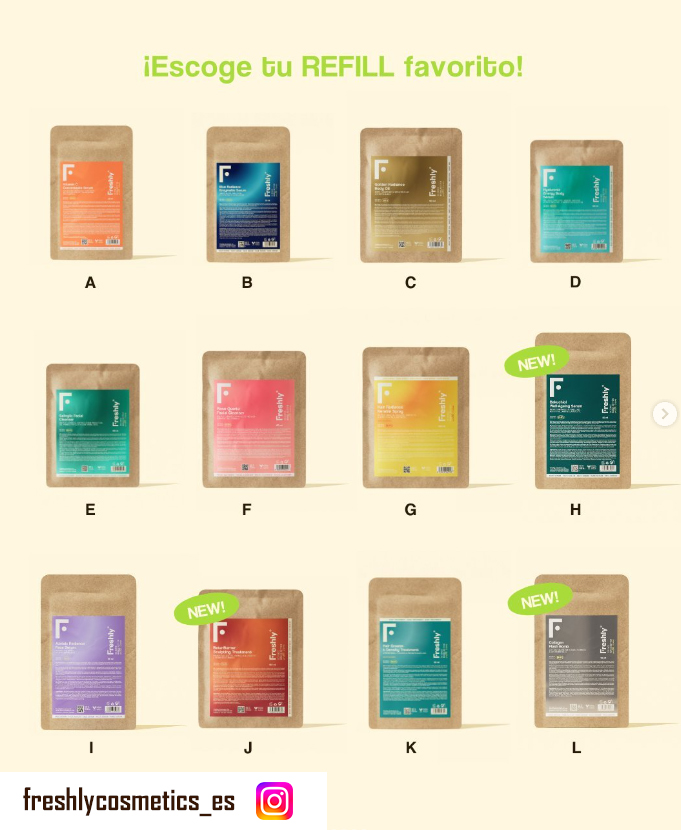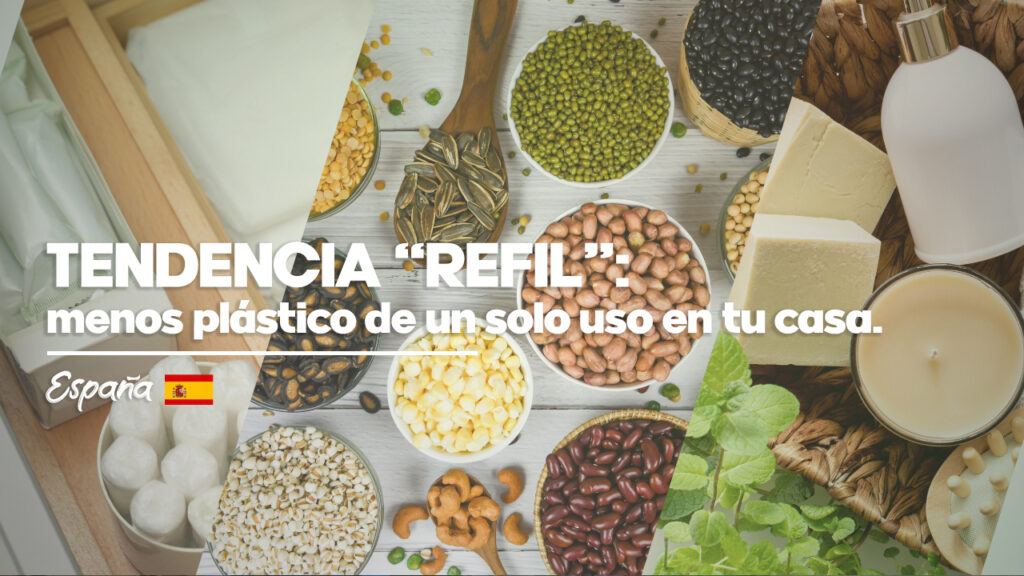Have You Noticed How Much Plastic You Use Every Day at Home?
Take a quick look around your house—your kitchen, your bathroom, maybe even your closets. What do you see? Plastic. Everywhere. From your toothpaste tube to your face and hand creams, from shampoo bottles to ketchup containers, pasta bags, rice packaging—you name it, it’s probably wrapped in plastic. If we made a full list, you’d be shocked by how many single-use plastic items we go through daily, only to toss them straight into the trash.
That’s exactly where this week’s topic comes in. Over the past few years, a powerful trend has been gaining momentum: it’s called “refill.” And it’s all about reducing plastic waste by reusing containers instead of throwing them out. The idea is simple—when your shampoo runs out, instead of ditching the bottle, you head to a refill store and get it filled back up. Easy, right?
One place doing just that is Zerowastedmad_tienda, a small but mighty shop located in Madrid, Spain. Their mission? To reduce waste to zero—and they mean it. No plastic in their products, and definitely no plastic in their packaging either.
They opened their doors just over three years ago. It hasn’t been easy convincing people to shift their habits, but according to the owner, there’s been a noticeable change. More and more Spaniards are embracing sustainable living, and that shift in mindset gives us serious hope for the future.

Spain Is Waking Up to the Climate Crisis—But There’s a Catch
Climate change is no longer just a buzzword in Spain—it’s front and center on the public agenda. More and more citizens are starting to care about how their everyday actions impact the planet. That means rethinking how we recycle, understanding how much plastic shows up in our daily routines, and getting serious about reusing what we usually toss out.
Sounds great, right? But here’s the catch: even if people want to do better, the market isn’t exactly making it easy. The truth is, there’s still a limited selection of eco-friendly products on store shelves. Most of the brands that offer sustainable packaging are the ones that were built on that mission from day one. And if consumers have to jump through hoops just to find a greener alternative, let’s be honest—they’ll probably stick with the same old wasteful products out of convenience.
That’s where the Ellen MacArthur Foundation, a global leader in Circular Economy advocacy, steps in. They’ve outlined four smart categories for how refill systems can actually work in real life:
At home: You buy a reusable container and refill it yourself with products you’ve purchased separately.
In-store: You bring your container to a refill station at a store or supermarket and top it off there.
Home pick-up: A company picks up your empty container from your house and drops off a freshly filled one—cleaning and reusing the container for you.
Return system: You return your empty container to a designated drop-off point or locker, and the company takes care of the cleaning and redistribution.
These ideas aren’t just innovative—they’re necessary. If we want to make sustainability the norm and not the exception, it has to be convenient, accessible, and part of everyday life.

Refill Revolution: From Glass Jars to Big Questions
In Spain, more and more companies are jumping on the green wave every day. Even major players in the cosmetics industry—like Freshly Cosmetics—now offer entire lines of hair, face, and body products packaged in eco-friendly, recyclable formats designed to be refilled using sleek glass containers.
This whole refill concept is catching on—and fast. But it also brings up some big questions. What about the massive corporations that still produce plastic packaging at scale? Will there come a time when regulations force them to adopt refill-friendly practices? Or will we have to keep these small-scale, community-driven initiatives alive on our own, almost like a DIY rebellion against waste?
💭 Imagine starting a business built entirely around this idea.
What kind of refillable products would you like to see in your neighborhood shop?
Share your thoughts—what would you love to refill instead of throwing out?

